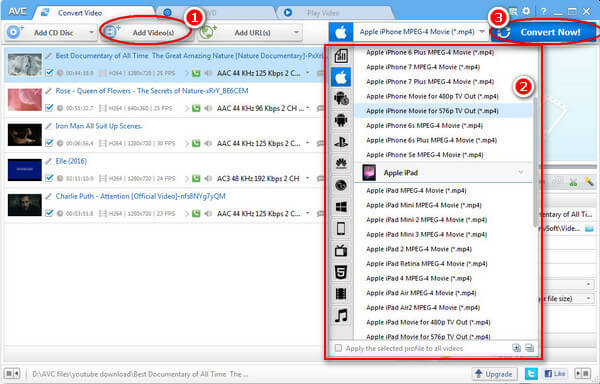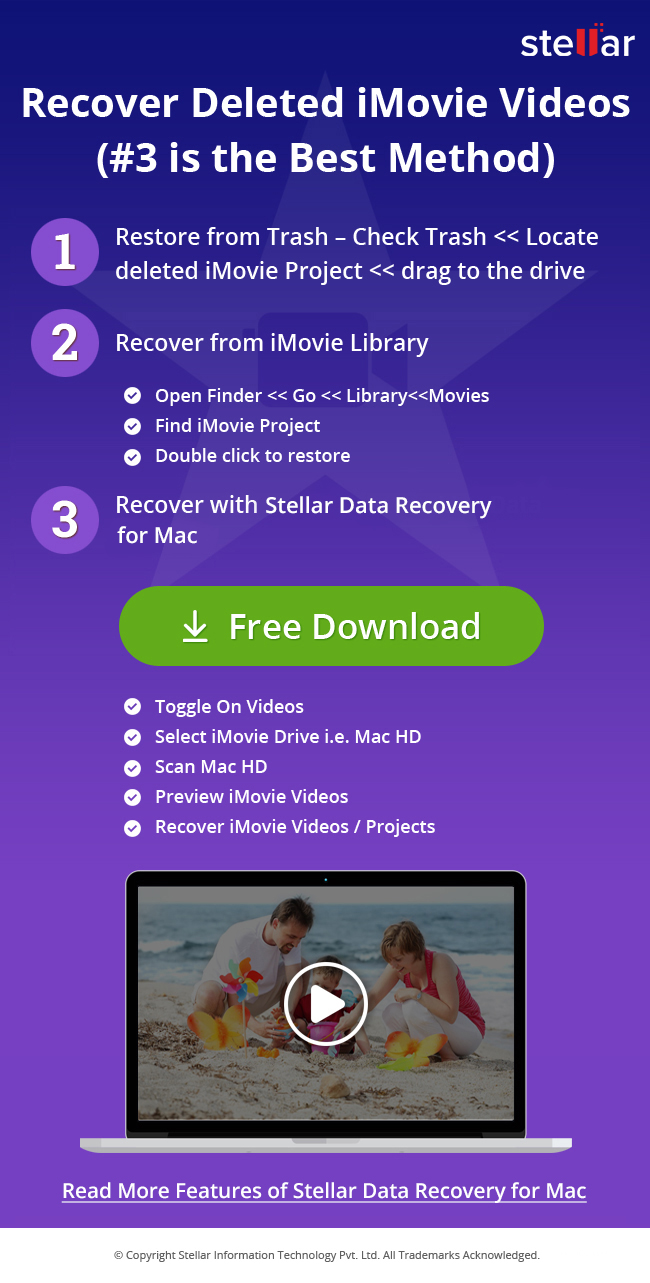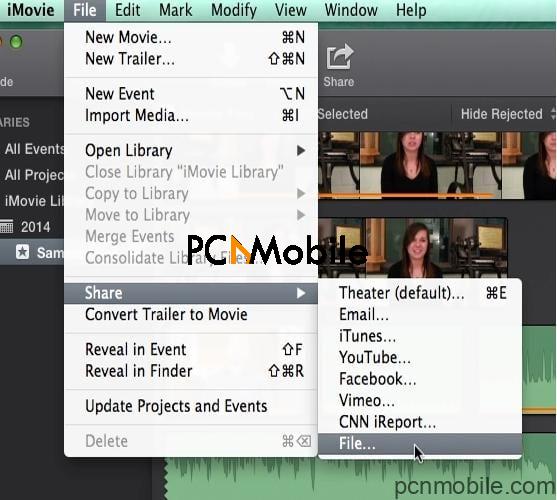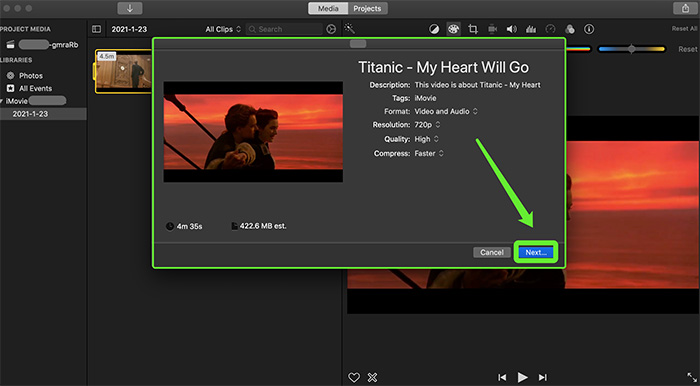

Then switch back to your new project and paste those clips into the timeline after the seeding clip. If you are already working on a project that’s stuck at 720p, open it, click in the timeline, and press Command-A followed by Command-C to select and copy all the clips. Then drag in the screencast clips you want to edit. Drag the seeding clip you recorded into the new project’s timeline.


In iMovie, click Create New to create a new project. Transfer this seeding video to your Mac however you like, such as letting iCloud Photo Library move it to the Mac, after which it appeared in iMovie’s Photos Library. The length and subject matter of the video are irrelevant, as long as it’s at the correct resolution, so just record a few seconds of your foot to get a small file. Set the resolution in Settings > Camera > Record Video. But I figured out a different way of convincing iMovie to allow me to export a 4K file.įirst, using your iPhone, record a video at 1080p or 4K, whichever is the max for your device. This problem has stymied many people, and there are numerous YouTube videos suggesting that you create a new project and drop a high-resolution photo at the beginning of the timeline to set the project to a higher resolution. The problem is that iMovie doesn’t let you set a project’s resolution manually-for that you seemingly need the $300 Final Cut Pro X-and on the Mac, it fixes the project’s resolution based on the first clip you insert. It’s also just the principle of the thing: I put in high-resolution 4096-by-2304 video, which is what QuickTime Player captured from my 27-inch iMac with 5K Retina display, and I expect to be able to export a 4K version of the file in the end. That’s not optimal for how-to videos with a lot of text, which are best viewed when zoomed to full-screen anyway. And both come with all Macs for free, so that’s where we’re starting.īut I recently stumbled across an infuriating problem: no matter what I did with my original screen recordings, I couldn’t use File > Share > File in iMovie to save a video file at a resolution higher than 720p. As far as tools go, ScreenFlow is the gold standard, but QuickTime Player can record screen actions and iMovie is a decent video editor. We’ve been trying to incorporate screencasts into more of our articles here at TidBITS-there are times when a short video conveys some point better than any number of screenshots.



 0 kommentar(er)
0 kommentar(er)
